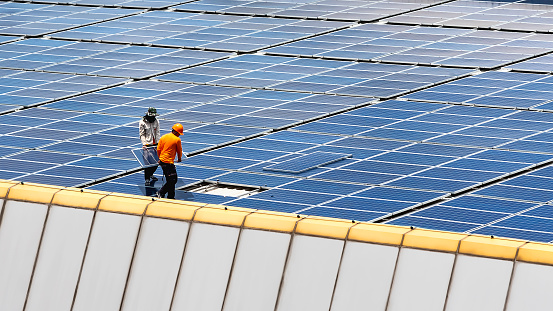In welcoming Indonesia’s green energy transition and zero-zero emissions, the Ministry of Energy and Mineral Resources (ESDM) continues to insist that the implementation of the ESDM Ministerial Regulation No. 26/2021 concerning Rooftop Solar Power Plants (PLTS) must continue. However, currently, there are still some obstacles to its implementation.
Currently, the government continues to strive so that these regulations can be immediately formulated and implemented in the field. This was conveyed by the Director-General of EBTKE, Ministry of Energy and Mineral Resources, Dadan Kusdiana.
According to him, the government continues to strive so that the Solar Power Plant Roof rules can be implemented in the field. This is because, apart from having an impact on meeting the New Renewable Energy (EBT) mix target of 23% in 2025, the role of Rooftop PLTS is very important for the industry.
“This is driven by PLTS whose prices are competitive and the desire of several industries to produce clean energy so that later production will become part of green products. So this is a match from the side of all needs,” said Dadan at the Energy Corner event held by CNBC Indonesia, Monday ( 9/5/2022).
Cooperation between the government and PLN
The government and PT PLN continue to have discussions so that the implementation of this rule can be carried out. One of them is by revising the rules that have just been published.
The target capacity of Rooftop PLTS installed in 2025 is expected to reach 3,600 Megawatts (MW) or around 3.6 Gigawatts (GW).
However, it is not easy to meet this target. This is because the installed capacity of Rooftop PLTS to date is only 54 MW with around 5300 customers spread throughout Indonesia.
“Now the capacity is at 54 MW, which already has an Exim meter from PLN. But many have installed it but there is no meter yet, so we can’t calculate how much additional it will be. Then from those installed, the figure is approximately 5300,” said Dadan.
Currently, Dadan said, his party together with PLN is continuing to have discussions so that the implementation of this rule can be carried out. Given, that the application of rooftop solar panels has the potential to disrupt PLN’s electricity sales business.
This can happen because PLN is still experiencing an oversupply of electricity. So it is also the attention of the government.
Moreover, so far, the PLN electricity purchase scheme from the private sector is through the Take or Pay policy, aka TOP.
This means that whether to use it or not, PLN must continue to pay several bills from the Independent Power Producer (IPP) generator by the agreed contract.
“It is undeniable that in the end, PLN still has to pay from the existing electricity contract, whether it is used or not, it must still be paid. This is a fairly large number,” he said.
























